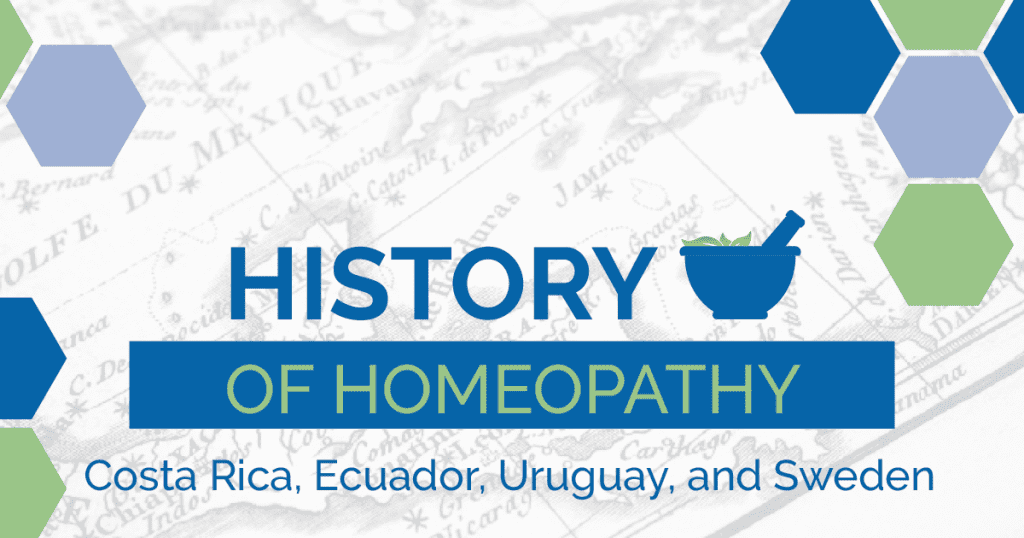Snapshots from There and Then: History of Homeopathy

In honor of AAHP’s 100th anniversary year, we’re looking back at the history of homeopathy to learn how the medical modality spread worldwide. Readers will discover startling vignettes of unexpected paths and outcomes. Many may know much about homeopathy here and now, but we hope you find our “There and Then” series informative and interesting!
Costa Rica
Homeopathy has been present in Costa Rica since 1890 and regulated by the medical association since 1921. The association defined homeopathy as a medical specialty in 1986, with an executive order of the national authorities giving it official recognition in 1994. In addition, some pharmacists are included as “specialists” or “masters” in their professional association. There are approximately 800 homeopathic prescribers, including physicians, pharmacists, other health professionals, and non-professionals. The first bilingual Spanish-English Repertory (in card form) is Costa Rican in origin from 1925. Homeopathic medicines are sold in specialized homeopathic pharmacies; some regular pharmacies include some homeopathic remedies in their inventory. About 51% of the Costa Rican people use homeopathy as their first choice of medicine.
Ecuador
Homeopathy was recognized by the national constitution in 1998 and ratified by the new constitution in 2008. This was due to the work of outstanding homeopaths, whose hard work now permits the right for practitioners to practice homeopathy and for all citizens to take advantage of this medical specialty.
Uruguay
A homeopathic medical association established in 1988 promotes information about homeopathy to the public through magazines, radio, television, and social networks. The association also provides medical care to the country’s low-income population. Through the group’s efforts, homeopathy was decreed as a medical specialty in 2009. Seven years later, the executive branch created a regulatory framework for the preparation and registration of homeopathic medicines.
Sweden
Homeopathy was introduced to Sweden in 1826 through the interest of Dr. Wahlenberg, a student of Linné (who formalized scientific binomial nomenclature). Through the 19th century, there was a steady interest among practitioners. In the 20th century, the history is one of joint interest and influence by both practitioners and consumers. The government tried to ban the sale of homeopathic medicines three times; all attempts failed due to united push-back from both practitioners and consumers. Twice there have also been failed efforts to prevent non-licensed individuals from “practicing” homeopathy. Yet it is still not possible for licensed medical practitioners to utilize homeopathic products while in the service of the public health care system.
There are about 500 single ingredients and more than 100 multi-ingredient homeopathic medicines registered with the Swedish regulators under the European “simplified procedure” (which includes a prohibition against indications appearing on the label). While the medicines are legal, ironically, homeopathic products cannot be sold in pharmacies and must be obtained from health food stores.
References:
https://homeopathic.com/homeopathy-in-costa-rica/
https://d-nb.info/990663078/34
https://www.lmhi.org/Home/NvpAndCountries
